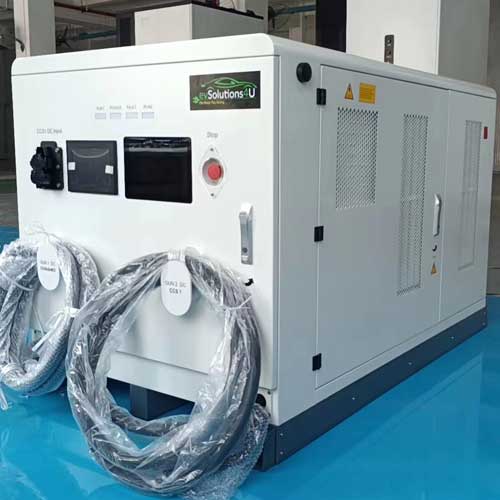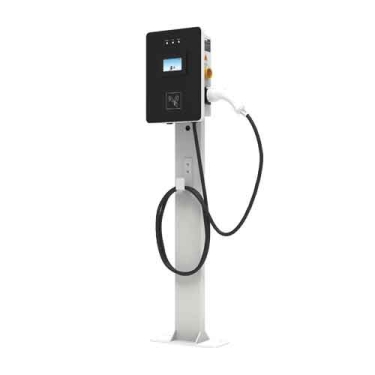- Visitors:0 Views
- Time:2025-04-09
electric vehicle ev charging infrastructure
Electric vehicle ev charging infrastructure: technological innovation and ecological construction
1. Industry status and core challenges
By 2025, the total number of public chargers in the world is expected to reach 40 million, but infrastructure development still faces three contradictions:
1.1. Imbalance between supply and demand: The ratio of electric vehicles to chargers in China's first- and second-tier cities has been optimized to 3:1, while the ratio in third- and fourth-tier cities and rural areas is still as high as 15:1, and the difference in urban and rural coverage is more than 60%;
1.2. Lagging technology iteration: The power of old chargers is generally lower than 120kW, which cannot meet the needs of 800V high-voltage platform models;
1.3. Power grid bearing pressure: The instantaneous power of supercharging stations reaches megawatts, and the cost of urban power grid transformation increases by 25%-40%.
2. Technological innovation drives efficiency upgrades
2.1. Large-scale application of liquid-cooled supercharging technology
Adopting a fully liquid-cooled cooling system, a single gun output current of 800A and a power of 600kW can be achieved, and a 5-minute energy replenishment range of 300 kilometers. Hongjiali's liquid-cooled super chargers have been deployed on 30 highway networks across the country, and the average daily service vehicle per pile has increased to 50.

2.2. Integrated energy management of photovoltaic storage and charging Through the "photovoltaic power generation + energy storage peak regulation + intelligent scheduling" model, the dependence on the power grid is reduced by more than 45%. For example, the energy router developed by Hongjiali can optimize the charging and discharging strategy in real time, and the comprehensive energy efficiency of the photovoltaic storage charging station is increased to 92%.
2.3. Flexible charging system adapts to multiple scenarios The modular design supports dynamic power allocation, and a single station can be compatible with 7kW slow charging to 600kW super charging at the same time. This solution saves 60% of the cable laying cost in the renovation of old communities.
3. Practice of multi-scenario solutions
3.1. Urban fast charging network Build a "5-kilometer charging circle" that integrates convenience stores, battery swap stations and other formats, and the user stay time increases by 40%; Hongjiali's intelligent scheduling system matches supply and demand in real time, and the equipment utilization rate is increased to 65%.
3.2. Heavy truck energy supply system
High-power chargers above 400kW are deployed in mines and ports to support V2G bidirectional power supply, and the annual carbon trading income of a single charger exceeds 20,000 yuan;
The battery replacement mode realizes 5-minute battery replacement, and the average daily service capacity reaches 200 vehicles.
3.3. Mobile emergency energy replenishment network
Charging vehicles equipped with energy storage systems can cover disaster areas, with a 72-hour power supply capacity of 5000kWh;
Hongjiali energy storage mobile charger supports Bluetooth unlocking and is suitable for flexible scenarios such as temporary parking lots.

4. Policy coordination and ecological construction
4.1. Improvement of the standard system
Enforce the national standard for charging interfaces (GB/T 20234) to extend the life of supercharging equipment from 5 years to 10 years. Products of Hongjiali and other companies have passed international certifications such as CE and UL, and are suitable for 90% of global models.
4.2. Innovation of investment incentive mechanism
The EU subsidizes 30% of the construction cost of photovoltaic storage and charging projects, and China includes chargers in the scope of support for special bonds for new infrastructure;
The peak-valley electricity price arbitrage model increases operators' profits by 20%-35%.
4.3. Data value mining
Charging behavior data is connected to the smart city platform, helping to increase the accuracy of grid load forecasting to 95% and reduce the cost of distribution transformation by 15%.
The electric vehicle ev charging infrastructure is shifting from "quantitative change" to "qualitative change", and technology iteration and model innovation have become the key to breaking the deadlock. Hongjiali and other companies provide the industry with highly compatible and energy-efficient infrastructure support through solutions such as liquid cooling supercharging and energy routing. It is expected that by 2030, the global car-to-pile ratio will be optimized to 2:1, and the charging network and energy Internet will be deeply integrated to accelerate the process of carbon neutrality in the transportation field.
Recommended Reading
- ultra-quiet liquid-cooled charger is launched2025-04-10
A new era of charging! Hongjiali's ultra-quiet...
- Happy Chinese New Year! Schedule Notice2023-05-23
Happy Chinese New Year!Schedul
- 2023 Dragon Boat Festival Holiday Notice2023-07-31
TheDragonBoatFestivalin2023isa
- EV Charging stations in us: Exploring efficient an...2025-02-25
As the world's awareness of reducing carbon em...
- ev chargers in europe2024-06-11
The current status and develop
- electric charging stations greece2025-04-11
Electric charging stations greece: the battle for ...
- What does CCS2 charger mean2025-01-14
A CCS2 charger is a special kind of charging plug ...
- Who has the most EV fast charging stations2023-07-31
WhohasthemostEVfastchargingsta
- What is EV charging2023-10-20
What is EV charging? As the na
Hot Products
-
level 2 ev charger
Hongjiali New Energy The Level 2 EV Char
Get last price
-
type 2 evse
Type 2 evse 3 phase Type 2 electric car
Get last price
-
electric vehicle charging...
Find Electric Vehicle Charging Points Ma
Get last price
-
solar ev charging station
Solar ev charging stations, also known a
Get last price



